Current News
/ArcaMax
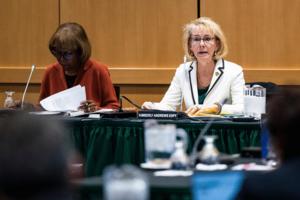
Pro-Palestinian students present Wayne State with 'responsible' plan to divest from Israel
DETROIT — More than a dozen pro-Palestinian students and their allies chided the Wayne State University Board of Governors during a heated Wednesday meeting as they presented a proposal to divest from the university's endowment any holdings linked to Israel amid the Israel-Hamas war.
"Divest finally," said student Logan Bull. "The sooner you ...Read more

One of last survivors of Pearl Harbor attack dies at 100
When Bob Fernandez joined the Navy in August 1941, his innocence was forgivable.
Only 17, he had grown up in San Jose, California, and quit school after eighth grade. Quick with his hands and feet, he followed his older brother on the local boxing circuit and was ready for new opportunities.
Four months later, on Dec. 7, Fernandez came of age....Read more

What is spondylolisthesis, the back condition that derailed Luigi Mangione's life?
What a difference a fraction of an inch can make.
Having one of the 33 bones in his spine out of alignment by less than half an inch apparently diminished Luigi Mangione's quality of life to the point that his lower legs felt like they were on fire. At other times, the 26-year-old charged with murdering the chief executive of UnitedHealthcare ...Read more
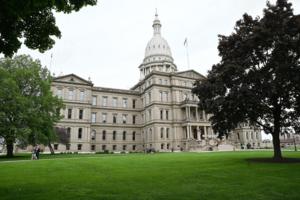
Bills subjecting Michigan governor, lawmakers to public records law inch forward in House
LANSING, Mich. — A Michigan House panel on Wednesday voted 5-0 to advance legislation that would subject the Legislature and the governor's office to the Freedom of Information Act, a change that's been sought for more than a decade in Michigan.
The hearing before the House Government Operations Committee marks the first time in 10 years that...Read more

Rep. Nancy Mace wears sling at the Capitol after saying she was 'accosted'
WASHINGTON — Rep. Nancy Mace wore a sling on her arm Wednesday at the Capitol after saying she was “accosted” on campus the previous night, though foster youth advocates disputed her account.
“I was physically accosted tonight on Capitol grounds over my fight to protect women. Capitol police have arrested him,” Mace wrote on X ...Read more
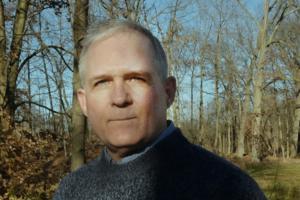
Defense bill offers lifeline for returned prisoners, aims to deter hostage-taking
WASHINGTON — A defense policy bill the U.S. House passed 281-140 Wednesday afternoon would allow Americans who have returned after being imprisoned abroad to apply for an official declaration by the federal government that their detention or conviction was "invalid."
The provision was something that Michigan's Paul Whelan encouraged lawmakers...Read more
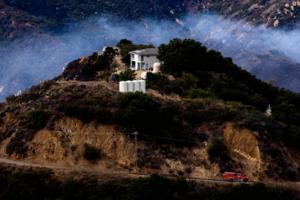
Wind-driven fire in Malibu continues to threaten homes as firefighters struggle to contain it
LOS ANGELES — A fire that has burned homes in Malibu and forced thousands to evacuate continued to menace the city Wednesday as firefighters battled windy conditions to gain control over the inferno.
The Franklin fire has destroyed at least seven homes and damaged nine others since it ignited amid strong Santa Ana winds late Monday. Fire ...Read more

NYC wanted posters target CEOs in wake of United Healthcare CEO Brian Thompson's slaying
NEW YORK — Menacing “wanted” posters wheat pasted near the New York Stock Exchange in lower Manhattan target other health industry executives in the wake of the slaying of United Healthcare CEO Brian Thompson.
A poster affixed to a traffic control box at Canal and Centre Sts. shows a red X over the face of Brian Thompson, the United ...Read more

Members say Angie Craig is strong contender to be top Democrat on House Agriculture Committee
WASHINGTON — The push by Minnesota Congresswoman Angie Craig to lead her party on the House Agriculture Committee remains a toss-up, though fellow Democrats say she’s a strong contender.
“I think it’s a lot closer than people think,” said Rep. Jill Tokuda of Hawaii. “Part of me wonders if this might slip down to geographic divides.�...Read more

House sends compromise NDAA to Senate
WASHINGTON — The House voted 281-140 on Wednesday to pass a bicameral compromise version of the fiscal 2025 National Defense Authorization Act, with a majority of Democrats voting against the bill.
The House action on the $883.7 billion legislation paves the way for a Senate vote in the coming days to clear the measure for its likely ...Read more
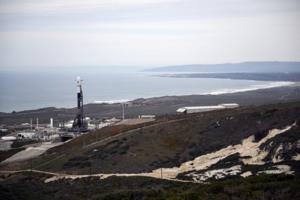
Chinese citizen allegedly photographed California's Vandenberg base with drone, says it was 'probably not a good idea'
Nearly a mile above Vandenberg Space Force Base in Santa Barbara County, California, a hacked drone soared through restricted airspace for roughly an hour.
The lightweight drone photographed sensitive areas of the military facility on Nov. 30, including a complex used by SpaceX, according to federal investigators.
The drone then descended back...Read more
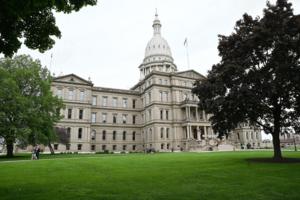
Michigan House, set to vote on nearly 100 bills, closes gallery to public over security
LANSING, Mich. — The Michigan House closed its gallery to public observers and barred a reporter from interviewing a person in the space directly outside the House chamber inside the state Capitol as lawmakers prepared to vote on nearly 100 bills Wednesday night.
In a statement, the House Democratic caucus said it had closed the gallery, "...Read more
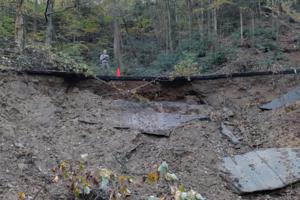
Disaster aid for national parks deemed 'critical' by advocates
As Congress hammers out disaster aid funding in the final days of the lame-duck session, advocates are pressing lawmakers to include $2.3 billion for more than two dozen national parks damaged by hurricanes, storms, wildfires and other natural disasters in the past two years.
The bulk of the funding request, $1.7 billion, would go for repairs ...Read more

Michigan Republicans unveil plan for amendment to require proof of citizenship to vote
LANSING, Mich. — Republicans unveiled plans Wednesday to pursue an amendment to the Michigan Constitution that would require voters to show proof of U.S. citizenship to register and show photo identification to cast a ballot.
Rep. Bryan Posthumus, R-Rockford, said he will introduce the proposal next year after Republicans take control of the ...Read more
President-elect Trump, House Speaker Mike Johnson to meet at Army-Navy Game
As President-elect Donald Trump promises to take immediate action on a number of fronts once he returns to the White House, he and House Speaker Mike Johnson will continue their talks about the upcoming agenda Saturday at the Army-Navy Game in Landover, Maryland.
The Republican congressional leader, whose son is a plebe at the Naval Academy in ...Read more
News briefs
Sen. Elizabeth Warren on UnitedHealthcare CEO assassination: ‘People can only be pushed so far’
Massachusetts U.S. Sen. Elizabeth Warren said “people can only be pushed so far” in an interview in which she condemned the assassination of UnitedHealthcare CEO Brian Thompson.
“The visceral response from people across this country who ...Read more

Baltimore lawyers begin presenting $5 billion request for 'full response to the opioid epidemic'
Lawyers for Baltimore City on Wednesday told a judge two drug distribution companies should have to pay $5 billion to curb the raging opioid epidemic here.
The approximately weeklong bench trial presided over by Circuit Judge Lawrence P. Fletcher-Hill kicked off with the testimony of a public health professor the city hired to create a detailed...Read more

FBI director plans to step down before Trump takes office
WASHINGTON — FBI Director Christopher Wray on Wednesday said he plans to resign at the end of the Biden administration, a move that would clear the way for Donald Trump to appoint his preferred pick for the position.
Wray, who was appointed by Trump in 2017 and is in the middle of a 10-year term, made the announcement at a town hall for the ...Read more

Luigi Mangione faces tough legal challenges, says Baltimore lawyer with ties to family
Luigi Mangione could be facing an uphill legal battle as a suspect in the shooting of UnitedHealthcare CEO Brian Thompson due to the mounting evidence against him, according to a Baltimore attorney with ties to the family.
A retrieved firearm and alleged manifesto contribute to what criminal defense attorney Tomas J. Maronick describes as “...Read more

Luigi Mangione case: Police get closer to 'motivation and mindset' in CEO killing
Authorities have pointed to fingerprints, shell casings, chronic back problems, and an “ill will toward corporate America” as they’ve been building a case against suspect Luigi Mangione in the killing of UnitedHealthcare CEO Brian Thompson.
They’re learning more about a possible “motive and mindset,” New York Police Department ...Read more
Popular Stories
- Kate Middleton's post-chemo Christmas is 'calm before storm' of succession
- Accused CEO killer Luigi Mangione's fingerprints match those found on water bottle and KIND bar wrapper
- Wind-driven fire in Malibu continues to threaten homes as firefighters struggle to contain it
- Michelle Wu administration official sentenced in connection to prison money laundering charge
- Disparities remain in Georgia's fast-growing Latino community





